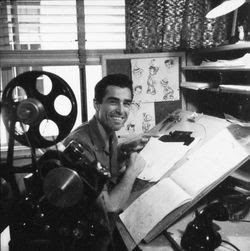Society for Animation Studies Conference
(This information comes courtesy of Harvey Deneroff , who is one of the conference organizers.) The 21st Annual Society for Animation Studies Conference, “The Persistence of Animation,” will be held July 10-12, 2009, at the Atlanta campus of the Savannah College of Art and Design. Held under the auspices of SCAD-Atlanta’s Animation Department, the conference features over 50 scholars and filmmakers from around the world who will present papers on a wide range of topics relating to animation history and theory; in addition, there will be workshops on teaching animation history and animation production. The conference itself will kick off with a keynote address Andrew Darley, the renown British media theorist, appropriately entitled “The Persistence of Animation.” In conjunction with the conference, the SCAD Library will be presenting a special exhibition, “Behind the Cels: Selections from SCAD’s Don Bluth Collection,” featuring art work donated to the school by Don Bluth and Gary Goldm




